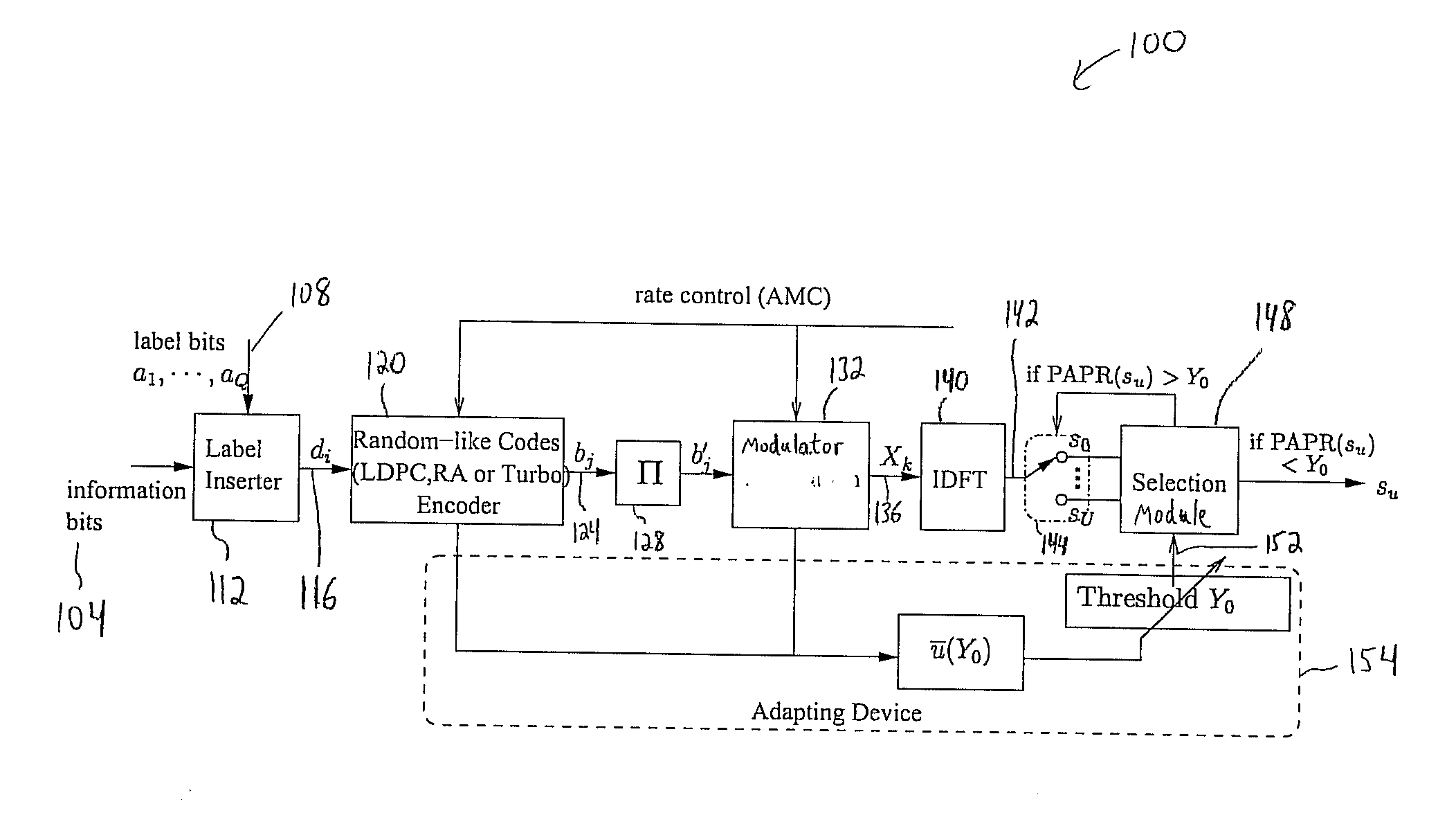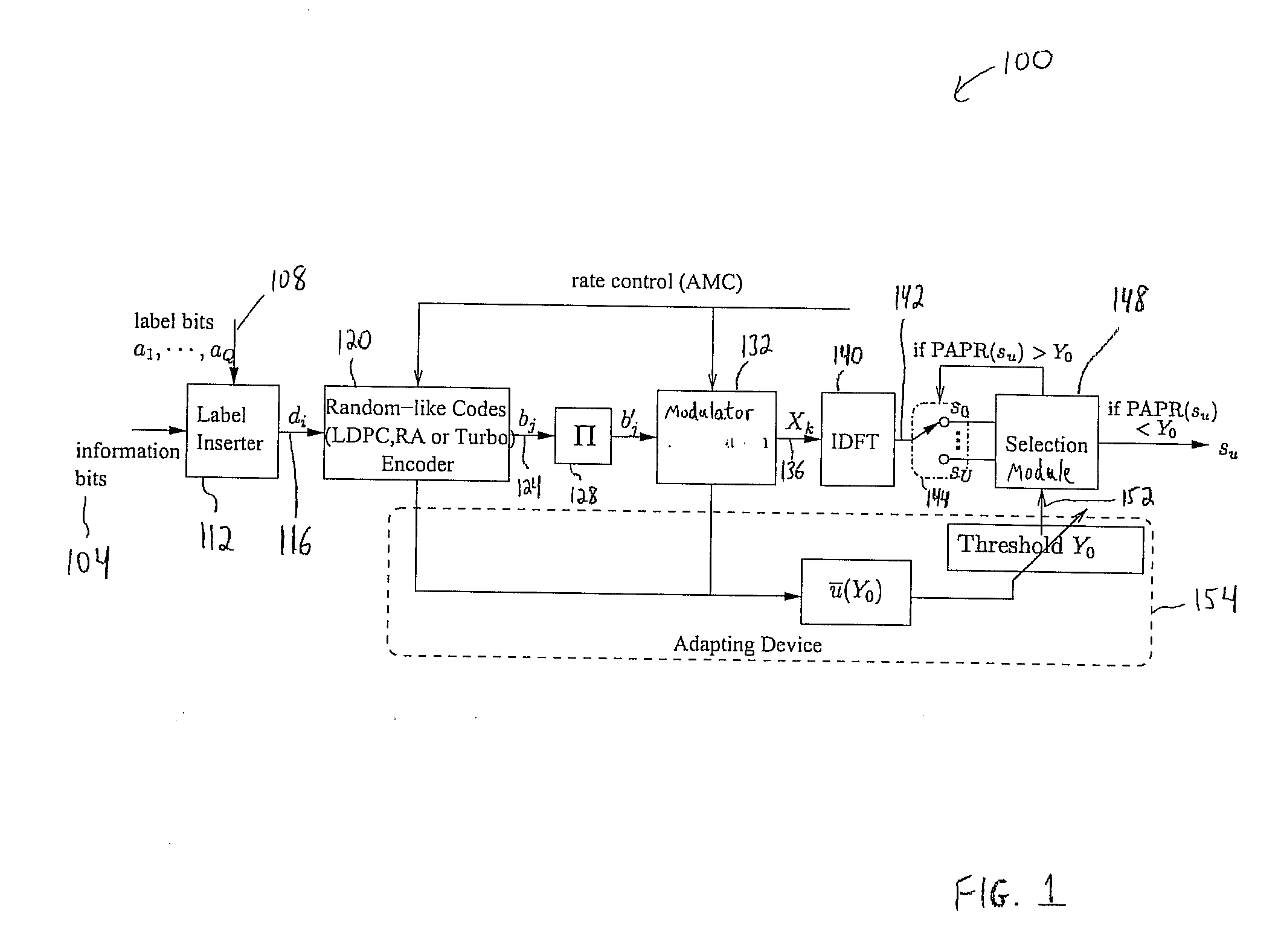Peak-to-Average Power Ratio Reduction with Threshold Limited Selection for Coded OFDM Systems
a technology of orthogonal frequencydivision multiplexing and peak-to-average power ratio, which is applied in the field of peak-to-average power ratio reduction in coded orthogonal frequencydivision multiplexing systems, can solve the problems of high peak-to-average power ratios, and inconvenient selection of thresholds, etc., and achieve the effect of reducing the peak-to-average power ratio (papr)
- Summary
- Abstract
- Description
- Claims
- Application Information
AI Technical Summary
Benefits of technology
Problems solved by technology
Method used
Image
Examples
Embodiment Construction
[0023]FIG. 1 shows a coded OFDM system 100 with K subcarriers (in OFDM systems, the frequency spectrum is divided into subbands. The smallest subband is called a subcarrier) signaling through a quasi-static fading channel. The OFDM system 100 is a transmitter used in mobile communications with a receiver. Each signal frame contains the information to be transmitted to a receiver in one OFDM slot.
[0024] Information bits 104 are transmitted (i.e., mixed) with label bits a1, . . . , aQ 108 into a label inserter 112 to produce label inserted information bits di 116. The label inserted information bits di 116 of each signal frame are encoded by a channel encoder 120, e.g., LDPC or RA encoder 120, to produce coded bits bj 124. The coded bits bj 124 are then interleaved by interleaver 128 and mapped into quadrature amplitude modulation (QAM) symbols X0, . . . , XK−1 by modulator 132, where Xk 136 represents the symbol at the kth subcarrier. An inverse discrete Fourier transform (IDFT) is ...
PUM
 Login to View More
Login to View More Abstract
Description
Claims
Application Information
 Login to View More
Login to View More - R&D
- Intellectual Property
- Life Sciences
- Materials
- Tech Scout
- Unparalleled Data Quality
- Higher Quality Content
- 60% Fewer Hallucinations
Browse by: Latest US Patents, China's latest patents, Technical Efficacy Thesaurus, Application Domain, Technology Topic, Popular Technical Reports.
© 2025 PatSnap. All rights reserved.Legal|Privacy policy|Modern Slavery Act Transparency Statement|Sitemap|About US| Contact US: help@patsnap.com



